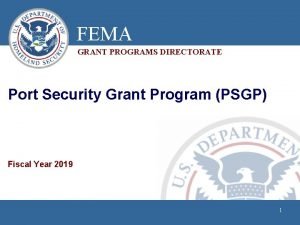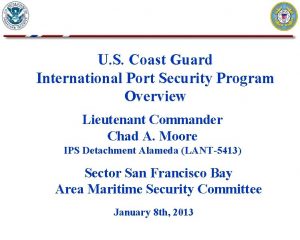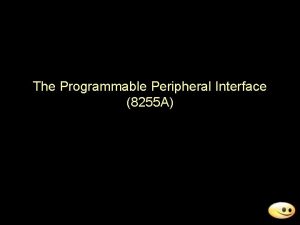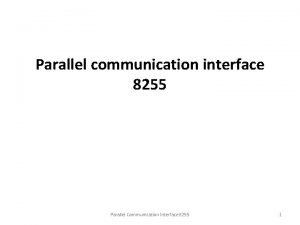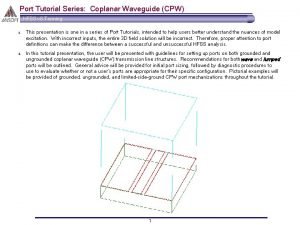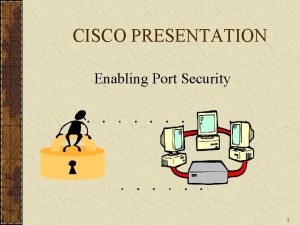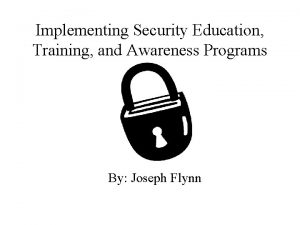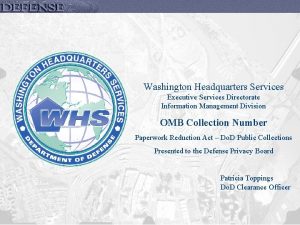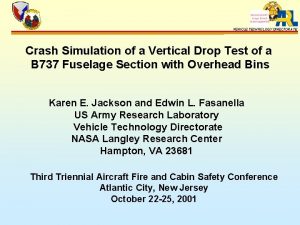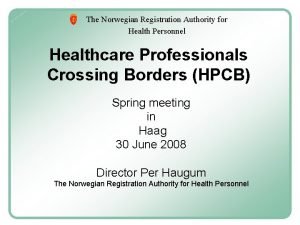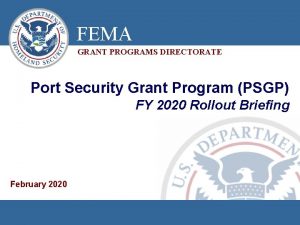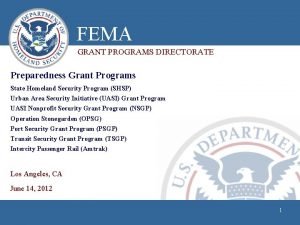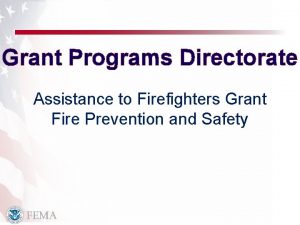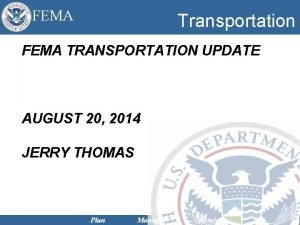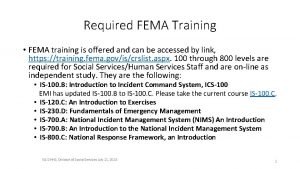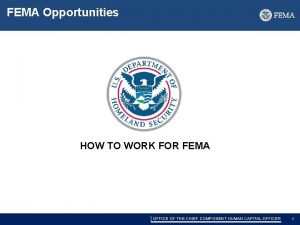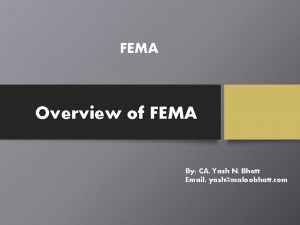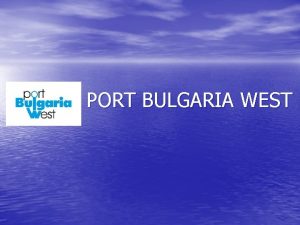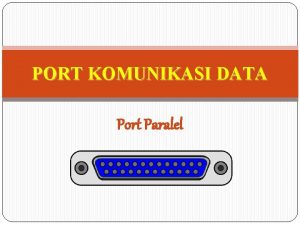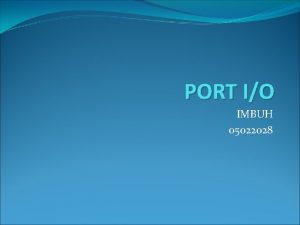FEMA GRANT PROGRAMS DIRECTORATE Port Security Grant Program















- Slides: 15

FEMA GRANT PROGRAMS DIRECTORATE Port Security Grant Program (PSGP) Fiscal Year 2018

Overview Transportation Infrastructure Security Branch § The Port Security Grant Program (PSGP) is one of four funded grant programs within the Transportation Infrastructure Security Branch Transportation Infrastructure Security Transportation Branch Infrastructure Security Branch (TISB) Transit Security Grant Program (TSGP) Port Security Grant Program (PSGP) Intercity Bus (IB) Intercity Passenger Rail (IPR)

FY 2018 Port Security Grant Program (PSGP) Program Overview FY 2017 FY 2018 § Purpose: PSGP provides funds for transportation infrastructure security activities to implement Area Maritime Transportation Security Plans and public/private facility security plans among port authorities, facility operators, and state and local government agencies required to provide port security services § Eligibility: Ports with Maritime Transportation Security Administration (MTSA) regulatory requirements will be funded based on risk and competitive project review $100, 000, 000 Program Highlights § § § Program funding is fully competitive Eligible applicants apply directly to FEMA for funding within their local Port Area In FY 2017, there were 720 applications (1, 157 projects) totaling $543 M reviewed, ~380 projects totaling $100 M funded Funding Priorities q Enhancing Maritime Domain Awareness q Enhancing Improvised Explosive Device (IED) and Chemical, Biological, Radiological, Nuclear, Explosive (CBRNE) Prevention, Protection, Response, and supporting Recovery Capabilities q Port Resilience and Recovery Capabilities q Enhancing Cybersecurity Capabilities q Training and Exercises q Physical Security (including TWIC)

Key Changes § 50% Cost share required of private entities – Exception for projects that provide port-wide benefit, such as: port-wide planning, security camera systems with shared access, response vessels and other maritime domain awareness systems. § Port areas that have the highest measureable risk will be prioritized for funding. Those port areas that have a measurable risk of at least 1 percent of the overall maritime security risk based on the comprehensive DHS/FEMA risk methodology will be prioritized above those below this risk level. § Systems for Award Management (SAM) registrants/renewals are required to submit an original, signed and notarized letter confirming the Authorized Entity Administrator associated with the DUNS number before the registration is activated. This will not prevent you from applying, but needs to be completed before an award is made.

Additional Changes § Appendix A (program priorities) updated – added examples and explanations – Distinguish physical security surveillance from port-wide surveillance – TWIC not a stand-alone priority, replaced with Physical Security as the priority which includes TWIC § Increased focus on projects specific to maritime security incidents involving Weapons of Mass Destruction (WMDs), cybersecurity, and attacks on soft targets. § IJ Template is required

Quick Points § Ensure that – Your agency is eligible for this program – Your project addresses PSGP priorities FY 18 NOFO – Your project is not an unallowable cost under PSGP (TIP: keep the FY 18 NOFO as a reference guide throughout the entire application process and life of the award) § Reimbursements – are allowable for all eligible costs associated with the project and are identified on the Authorized Equipment List (AEL) and not prohibited by the program or federal legislation https: //www. fema. gov/authorized-equipment-list – Partially funded awards will clearly identify allowable costs within the award documentation (budget revision required) § The project Scope of Work (SOW) approved for funding at the time of application should not be modified. If a scope of work change is needed post award, a program analyst must be contacted, and approval required prior to making any changes or work is performed

Environmental and Historic Preservation (EHP) Compliance § NOTE: The EHP review process must be completed, and approved by FEMA before funds are released to begin an awarded project. All projects funded with Federal funds, and non-Federal resources (to include match/cost share), must comply with EHP laws, regulations, and Executive Orders § An EHP review is an analysis of pertinent project information to determine whether a project may have the potential to impact environmental, historical, or cultural resources: – If awarded, costs associated with the preparation of EHP documentation may be reimbursable under M&A. – Grantees are responsible for completing the EHP Screening Form and providing all relevant EHP materials to GPD via the GPD-EHP Mailbox at GPDEHPinfo@dhs. gov – EHP Screening Form is located at: https: //www. fema. gov/medialibrary/assets/documents/90195 7

Cost Share or In-Kind Match Requirement § Cash and in-kind matches must consist of eligible costs (i. e. , purchase price of allowable contracts, equipment). And both are subject to the same requirements as the federal share (i. e. budget review and EHP review are required of your cost share and the cost-share must be outlined in the Investment Justification (IJ) and detailed budget worksheet. § A non-federal cost share (cash or in-kind) match of no less than 25% or 50% (for private/for profit entities) of the total project cost for each proposed project is required. § A cash match includes cash spent for project-related costs, while an in-kind match includes the valuation of a third party contribution of services or equipment. Likewise, in-kind matches used for a PSGP award may not be used to meet requirements for any other federal grant program. 8

Examples of Previously Funded Projects § Port-wide Risk Management Plans: – Plans that identify steps for addressing the highest risks to the port area § Expansion and hardening of access control points: – Reinforced gates used to prevent un-authorized vehicles from accessing the perimeter of the port area – Water-side barriers to prevent un-authorized vessels from approaching sensitive berthing areas – Screening equipment and camera systems § Rapid Response Boats: – High speed, quick response boats critical for preventing or responding to security incidents on waterways, especially in and around airports, cruise terminals, etc. § Training and Exercises: – Training designed to maximize the ability of port area personnel to effectively employ the equipment obtained with grant funding – Exercises involving realistic scenarios, after action reports, and corrective action plans designed to test capabilities associated with the equipment and training obtained with grant funding and ensure continuous improvement 9

Examples of Projects NOT Funded § Equipment or services not listed on the Authorized Equipment List as eligible under PSGP § Equipment or services listed as unallowable costs identified by the NOFO – Commonly include tow vehicles, weapon related equipment, proof of concept projects, hospitality projects (chairs, couches), etc. § Equipment or services that do no support COTP priorities or PSGP priorities § Equipment or services with no clear maritime security nexus § Projects that do not include an eligible cost share (see 2 CFR 200. 306) – Particularly section (3) Are necessary and reasonable for accomplishment of project or program objectives) – https: //www. ecfr. gov/cgi-bin/textidx? SID=d 50592213 cb 54 dbc 70 c 644 e 53 bc 1 e 316&mc=true&node=se 2. 1. 200_1306&rgn=div 8 § Projects lacking a corresponding budget § Applications submitted on behalf of other entities (consortiums)

Pointers for a Successful Application § Ensure that: – Your agency is eligible for this program – Your project addresses the FY 2018 PSGP NOFO priorities – Your project is an allowable cost under PSGP § Review Appendix D- FY 2018 PSGP Helpful Hints for Application § Answer the following questions: – Who will benefit from the project – What is the project – Where/When will the project be implemented and milestones demonstrating a time line – Why does it support PSGP local port area (maritime) priorities (TIP: As a reference guide, use an electronic copy of the NOFO throughout the application process and the life of the award to conduct word searches for pertinent subjects to your project that will ensure compliance with all program requirements- i. e. personnel costs have limited allowability, and general operational costs are not eligible for funding) 11

Pointers for a Successful Application Cont’d…. Investment Justifications (IJs) § Be concise, but descriptive: – Address specific FY 18 PSGP NOFO funding priorities – Identify existing or similar capabilities, as well as the vulnerabilities being addressed – Do not combine all projects into a single IJ (i. e. a fencing project should be separate from a vessel project) nor separate a single project into multiple IJs (i. e. for a fence project, a gate project, and lighting project would all be considered one “Facility Security” project) – Explain where/ how the project will be used to enhance the local COTP identified security needs in the port area. Projects that fail to demonstrate the required cost share, will not be considered for funding – Detail Budget Worksheets are required – Budget component breakdown of costs are to be specific (i. e. (5) PTZ Cameras at $10, 000 each, (1) 100 hour DVR at $5, 000). Do not be too general in description and say, “Camera System $100, 000” – Cost categories should demonstrate total costs (i. e. total equipment cost, personnel costs such as Management & Administrative (M&A), over time, backfill, and etc. ) – Cost share, even if it’s in-kind, must be demonstrated as part of the detail budget worksheet – Budgets must be approved by FEMA before project work can begin. Some budgets may be approved pre-award, others may require revisions to reflect final funding amounts and approved costs. 12

Pointers for a Successful Application Cont’d…. § The project Scope of Work (SOW) approved for funding at the time of application should not be modified. If a SOW change is needed post award, in order to be reimbursed for the costs you must receive an approval from your FEMA Program Analyst prior to making any changes or work is performed. § Reimbursements: – Are allowable for all eligible costs associated with the project and are identified on the Authorized Equipment List (AEL) and not prohibited by PSGP or federal legislation https: //www. fema. gov/authorized-equipment-list – Partially funded awards will clearly identify allowable costs within the award documentation (budget revision required) Common Mistakes § Applicants fail to: – Provide a complete and timely application to include all required documents – Demonstrate a clear and concise investment justification for the project – Provide a detail budget worksheet clearly identifying the project and its required cost share match § Projects appear to primarily support regions/inland projects and do not focus on Maritime Security Nexus 13

Kevin Groves Kevin. Groves@fema. dhs. gov Khori Torrence Khori. Torrence@fema. dhs. gov Grant Programs Directorate State Assignments Port Security Grant Program Mel Vanterpool Melvin. Vanterpool@fema. dhs. gov Matthew Patterson Matthew. Patterson@fema. dhs. gov Duane Davis East Section Chief Duane. Davis@fema. dhs. gov Cynthia Simmons-Steele West Section Chief Cynthia. Simmons-Steele@fema. dhs. gov Rene Phillips Lurranda. Phillips@fema. dhs. gov Kim Chatman Kimberly. Chatman@fema. dhs. gov Cara Blair Cara. Blair@fema. dhs. gov Omid Amiri Omid. Amiri@fema. dhs. gov Jackie Jackson Jacqueline. Jackson 2@fema. dhs. gov X AK Patrice Mc. Millan Patrice. Mc. Millan@fema. dhs. gov I WA OR MT N/A X ID N/A ND N/A WY N/A VIII CA HI IX Guam Northern Mariana Islands American Samoa MN UT N/A IX AZ N/A CO N/A KS VII III OH IN WV MO KY AR VI AL II DE Virgin Islands MD DC NC IV MS CT NJ PA VA TN NM N/A MA RI V IL NH NY MI IA OK TX II WI SD N/A NE N/A NV N/A ME VT SC GA LA FL Puerto Rico

Questions?
 Port security grant program
Port security grant program International port security program
International port security program Private secruity
Private secruity Fema higher education
Fema higher education 8255 ppi architecture
8255 ppi architecture Parallel communication interface 8255
Parallel communication interface 8255 Hfss coplanar waveguide
Hfss coplanar waveguide Cpmcd in software engineering
Cpmcd in software engineering Port security violation
Port security violation Packet tracer troubleshooting switch port security
Packet tracer troubleshooting switch port security Seta program 5 steps
Seta program 5 steps Executive services directorate
Executive services directorate Veterinary medicines directorate
Veterinary medicines directorate Vehicle technology directorate
Vehicle technology directorate Norwegian registration authority for health personnel
Norwegian registration authority for health personnel Early childhood education and care directorate
Early childhood education and care directorate
